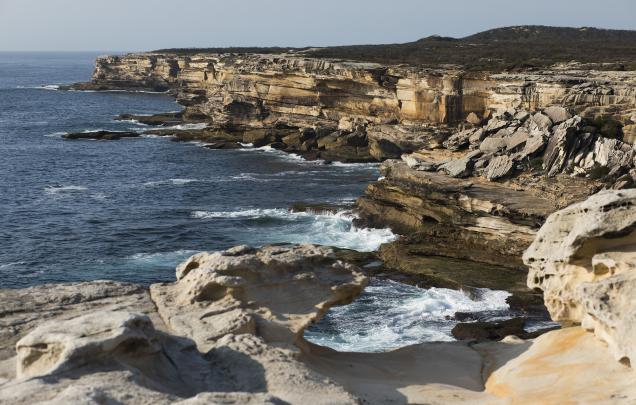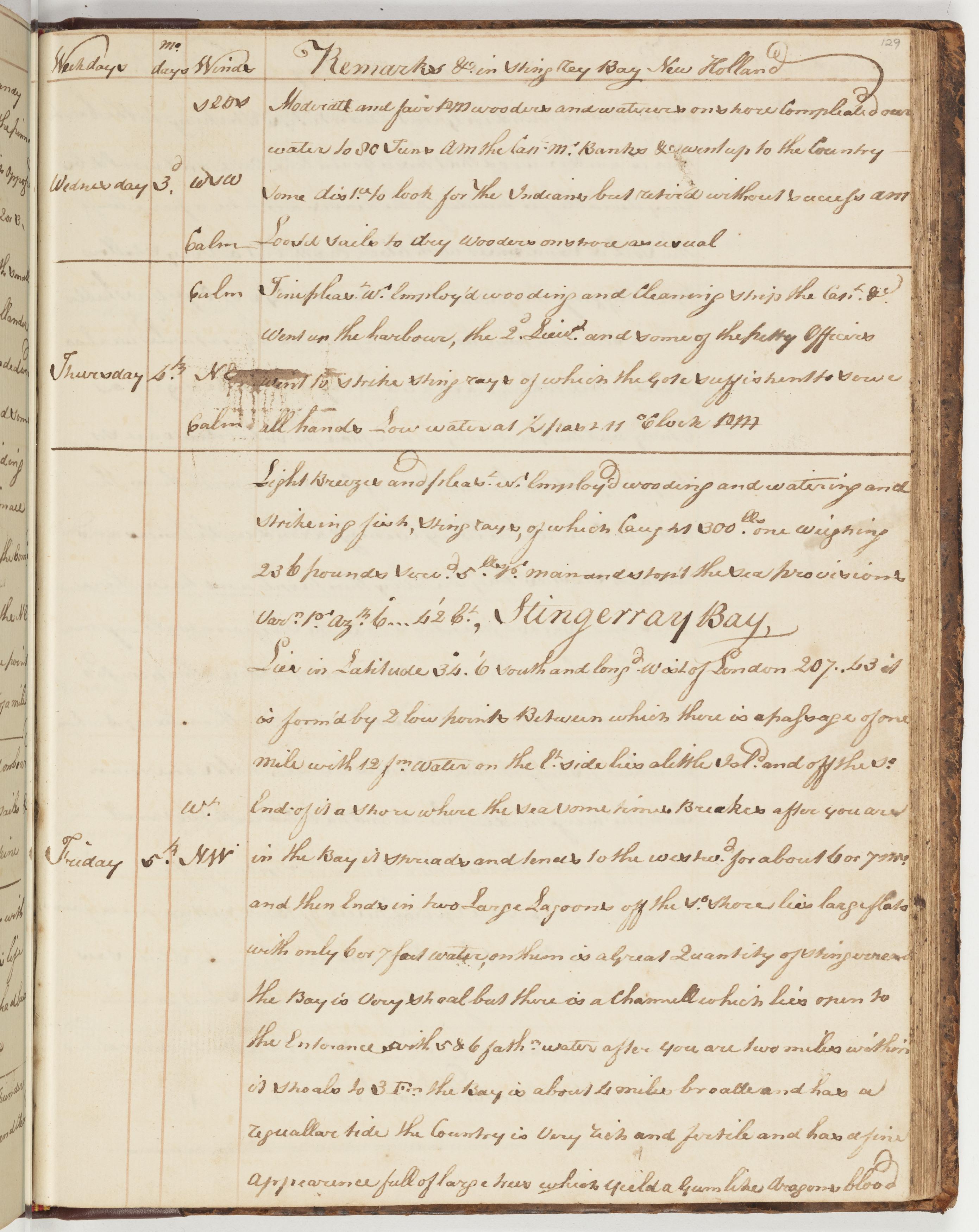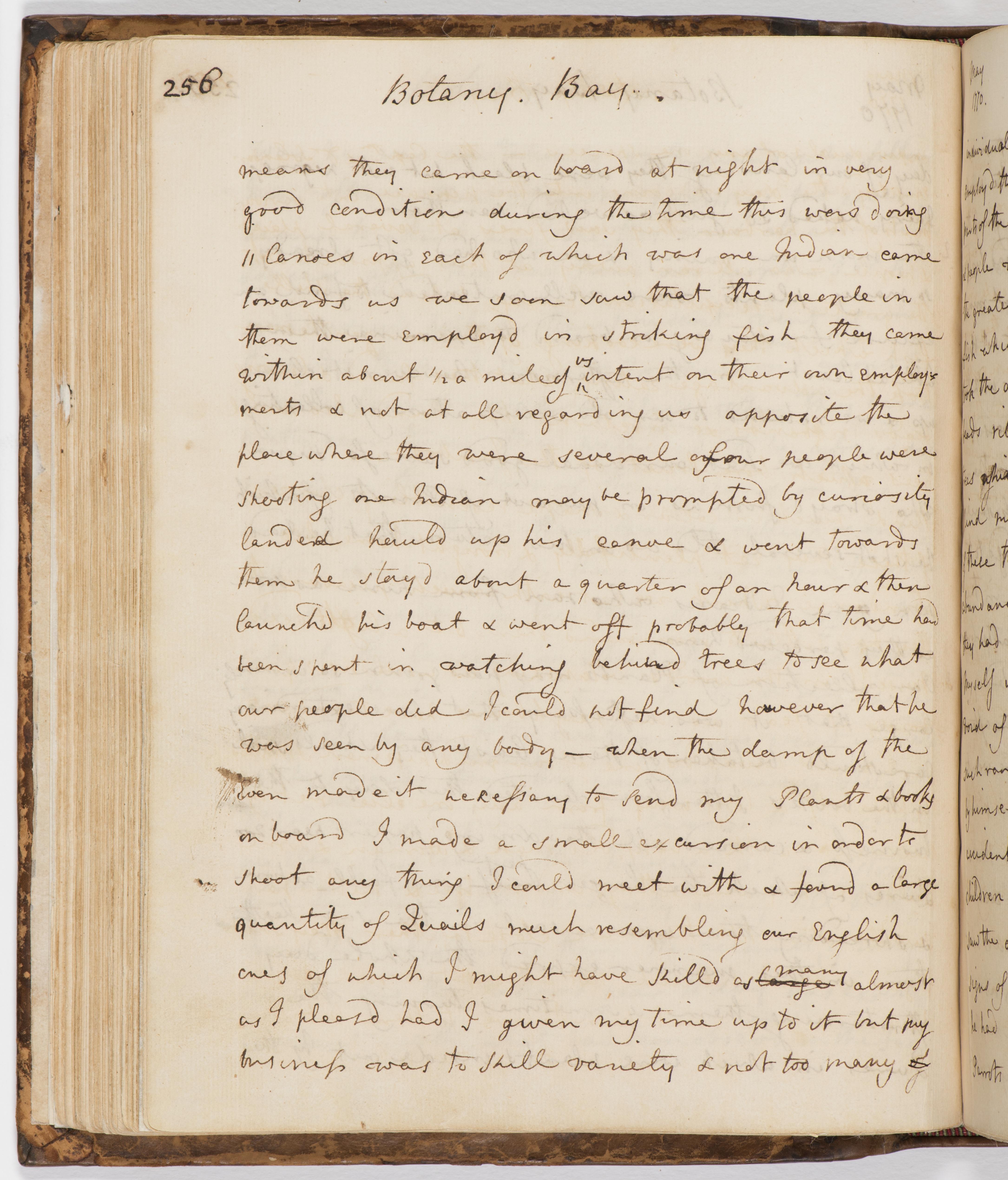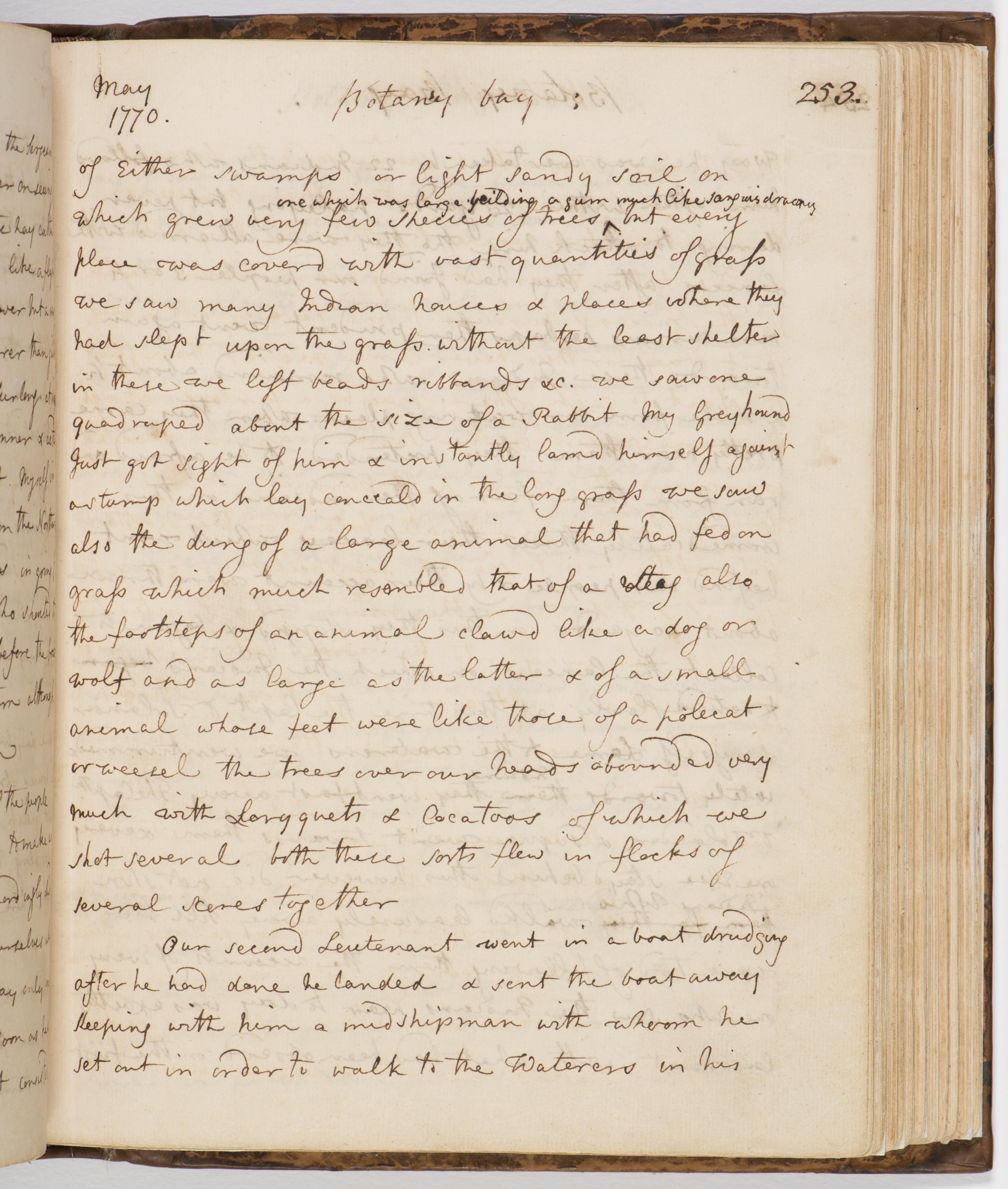A place of plenty
This is the student activity 1 of 8 of the Cook: it was only eight days learning activity.

Key inquiry question #1
How did the Gweagal people and the Endeavour crew differ in their understandings of food, language and nature?
What is for dinner?


Using primary sources, we can investigate the diets of those on board the Endeavour and of the Gweagal people and find out what was on the menu for dinner in 1770.
When the Endeavour left England, they packed more than 18 months’ worth of provisions – including biscuits, oats, preserved meat (which was very salty), vegetables, meat, butter and cheese. Livestock were also taken on board including, sheep, pigs, goats, chickens, ducks and geese. Water, wine, rum, and brandy were used to quench thirst. During their journey, they were able to restock their provisions. James Cook’s journal reveals that the Endeavour picked up fresh beef and vegetables in Madeira and Rio de Janiero. While staying at Kamay the crew of the Endeavour also fished and collected food to top up their supplies.
The journal of Peter Briscoe from 5 May 1770 reveals that he was involved in fishing:
Employ’d wooding and watering and strikeing fish, string rays, of which Caught 300 lbs. one weighing 236 pounds servd. 5 lbs 1st man and stop’d the sea provisions. Varn. 1st Azth. 6 degrees 62’ Et., Stingerray Bay.
You can see where Briscoe has written this in his journal, by clicking on the collection item below. His handwriting is quite difficult to read, but he has written ‘Stingerray Bay’ in large letters, which makes it much easier to find this quote.
Cook referred to this fishing party when he wrote in his journal on 5 May 1770:
Upon our return to the Boat we found they had caught a great number of small fish, which the sailors call leather Jackets on account of their having a very thick skin; they are known in the West Indies. I had sent the Yawl in the morning to fish for Sting rays, who returned in the Evening with upwards of four hundred weight; one single one weigh'd 240 pounds Exclusive of the entrails.
James Cook’s journal also gives some clues about the Gweagal people’s diet. He wrote the following in his journal on 6 May 1770:
On the sand and Mud banks are Oysters, Muscles, Cockles, etc., which I believe are the Chief support of the inhabitants, who go into Shoald Water with their little Canoes and peck them out of the sand and Mud with their hands, and sometimes roast and Eat them in the Canoe, having often a fire for that purpose, as I suppose, for I know no other it can be for… I have said that shell fish is their Chief support, yet they catch other sorts of fish, some of which we found roasting on the fire the first time we landed; some of these they strike with Gigs, and others they catch with hook and line; we have seen them strike fish with gigs, and hooks and lines are found in their Hutts. Sting rays, I believe, they do not eat, because I never saw the least remains of one near any of their Hutts or fire places.
You can see where Cook has made these entries in his journal, by clicking on the collection items below.
Joseph Banks also took note of what was being consumed in Kamay:
During the time this was doing 11 Canoes, in each of which was one Indian, came towards us. We soon saw that the people in them were employd in striking fish; they came within about 1/2 a mile of us intent on their own employments and not at all regarding us.
You can see where Banks has written this in his journal, by clicking on the collection item below.
Look at the gallery of sketches of botanical plants, drawn by members of the Endeavour crew during their time in Kamay, here.
Using this information, and the quotes from the journals above, brainstorm a list of foods eaten by the Gweagal people.
Write a factual report comparing the diets of the crew of the Endeavour and that of the Gweagal people. In your report, compare your findings with the modern food pyramid. Discuss who you think had the healthiest diet and why.
Naming and re-naming
Research your local area – what is the name of the town or suburb where you live? What special natural features exist around your school and home? Find out what the Indigenous name for your area is – is it the same name that is used today? Use the Rediscovering Indigenous Languages website.
Write a letter to your local councillor or mayor to persuade them that they should change the modern name of your suburb and return to the traditional Aboriginal name.
The Gweagal people had known their land as Kamay for tens of thousands of years before James Cook and the Endeavour arrived in 1770 and renamed it. When James Cook arrived, he did not forge a connection with the Gweagal people. He may have just assumed the place was unnamed, or he may have been marking his territory by erasing the previous name.
Look at the drawing of the stingray from the exhibition, Eight Days in Kamay, found here.
Originally, James Cook named the bay ‘Stingray Bay’ but later changed his mind, he wrote in his journal on 6 May 1770:
The great quantity of plants Mr. Banks and Dr. Solander found in this place occasioned my giving it the Name of Botany Bay.
You can see where Cook made this entry in his journal, by clicking on the collection item below.
Guess the animal

Everyone sees the world in their own unique way. When the Endeavour arrived in Kamay, those on board already had expectations and their own opinions, understandings and experiences of the world. One individual who brought their own knowledge and expectations with them was 25-year-old Joseph Banks. During the Endeavour’s eight-day stay in a wide, shallow bay south of the present-day Sydney from 28 April to 5 May 1770, he added so many previously unrecorded specimens to his botanical collections that Cook named the area 'Botany Bay'.
Joseph Banks actively supported the proposal of Kamay as a site for British settlement. After he returned to England with the Endeavour in 1771, Banks was hailed as a hero. He had become quite famous during his time away.
Banks’ journal from the Endeavour’s first Pacific voyage of 1768–71 is one of the Library's most important collection items. It allows us to hear, in his own voice, his thoughts about the land, people, plants and animals.
Examine this extract from his journal, in which he compares animals that he observes for the first time at Kamay with those he is familiar with from back in England:
We saw one quadruped about the size of a Rabbit … we saw also the dung of a large animal that had fed on grass which much resembled that of a Stag; also the footsteps of an animal clawd like a dog or wolf and as large as the latter; and of a small animal whose feet were like those of a polecat or weesel. The trees over our heads abounded very much with Loryquets and Cocatoos of which we shot several.
You can see where Banks has written this in his journal, by clicking on the collection item below.
Answer the following question:
- Which animals might he have been talking about?
Complete the table attached to this task.
Did you know this learning activity was just one in a series? To find more, click here.